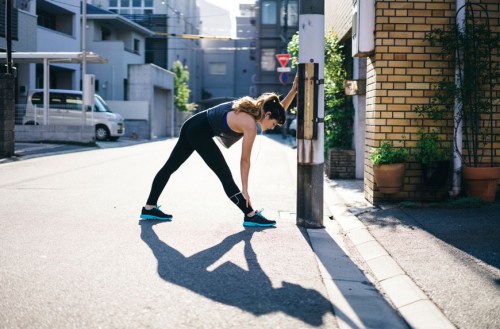Avoid butt-ne (yikes!) or worse by wearing this type of underwear to work out
Dr. Eden Fromberg, a holistic gynecologist, shares which panties will keep your lady bits healthiest while you're squatting and sprinting—plus, help you avoid a bad case of butt-ne.

Raise your hand if your dresser has been overtaken by colorful lace and satin panties.
Admit it: You’re proud of that top drawer (and maybe the one below it, too). At more than $10 a pair, you’ve invested in quite the collection of mood-boosting, super-sexy, and oh-so comfortable underwear, and it wasn’t built overnight.
But, as pretty as lace is and as nice as silk feels, it turns out those fabrics might not be the best choice for your down-unders—especially when it comes to all the sweating, squatting, and sprinting that you crush on the reg. (And they’re not ideal if you’re trying to avoid butt-ne, either.)
To get the scoop on what’s actually healthy, I consulted Eden Fromberg, DO, a holistic gynecologist in New York City. “Vaginal health relies on an intricate ecosystem of microorganisms,” she says. “The fabric that underwear is made of influences this ecosystem in various ways.”
“The vaginal immune system is designed to resist infection, but moisture-retaining underwear can interfere.”—Dr. Eden Fromberg
One of the main causes of any infection is moisture, explains Dr. Fromberg. “The vaginal immune system is designed to resist infection, but moisture-retaining underwear—like synthetic fabrics, tight garments, and even natural silk—can interfere.”
So even though that silk and lace may look the best, the healthiest option, by far, is 100-percent organic cotton underwear, says Dr. Fromberg. However, some Lycra or lace undies that feature a cotton lining can be a healthy back-up if you’re having trouble sacrificing your pretty underthings.
“The best form of action is prevention,” Dr. Fromberg attests. While she recommends you always wear underwear when you work out—that friction is a major no-no—wearing the right pair and changing your undergarments immediately post-workout is the most ideal scenario to save yourself from any painful situations.
Speaking of your nether regions, find out how Lo Bosworth is helping you take better care of your vagina. And if you do get a yeast infection—hey, it happens!—here are some healthy ways to deal.
This story was originally published on November 21, 2016; it was updated on July 6, 2018.
Sign up for the Well+Good SHOP Newsletter
Get exclusive deals on wellness, beauty, fitness, and food products that have been hand-picked by our editors.
Got it, you've been added to our email list.







